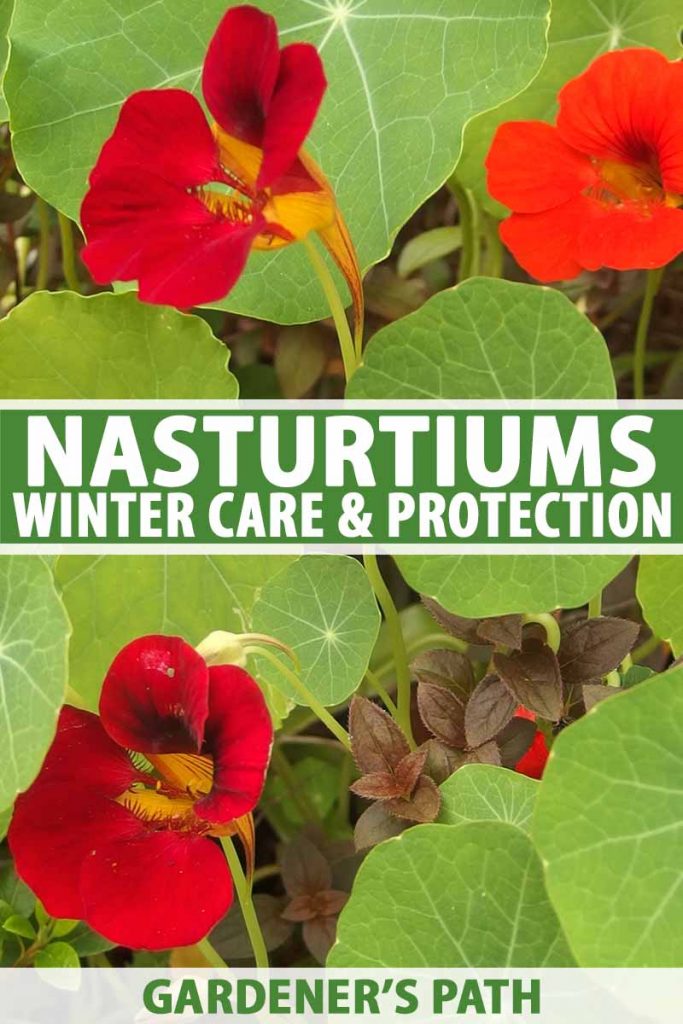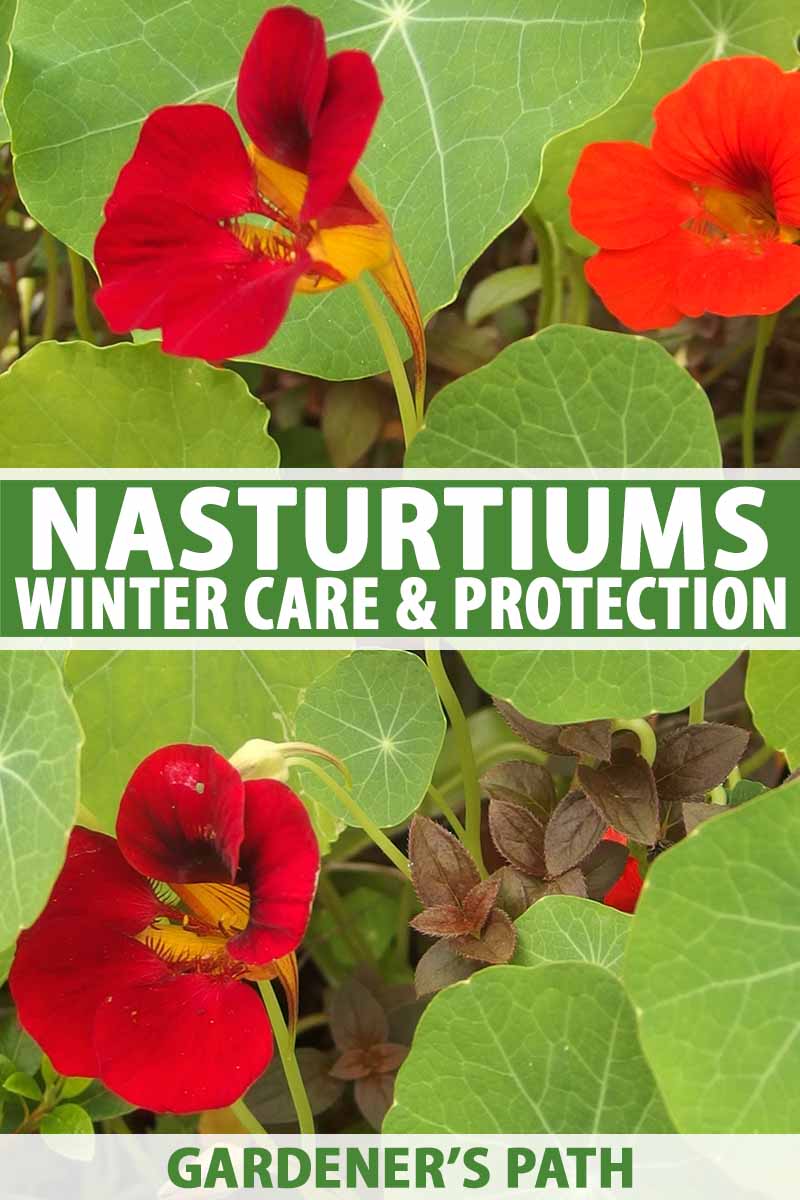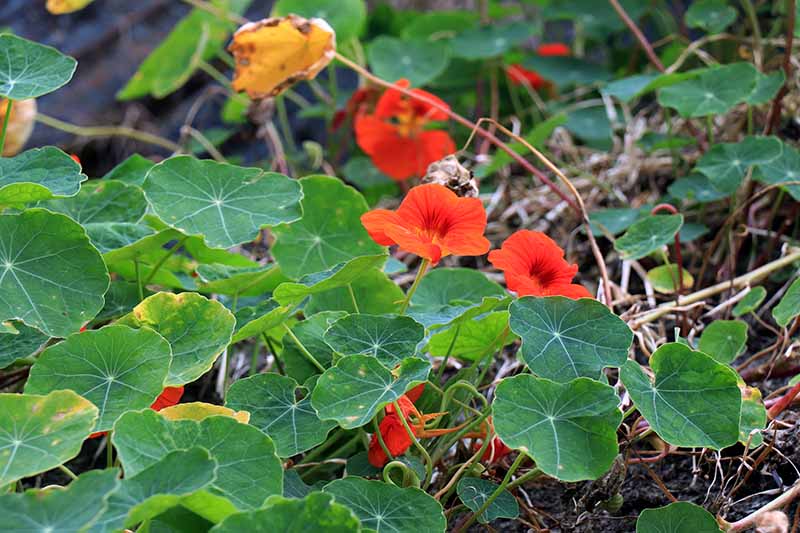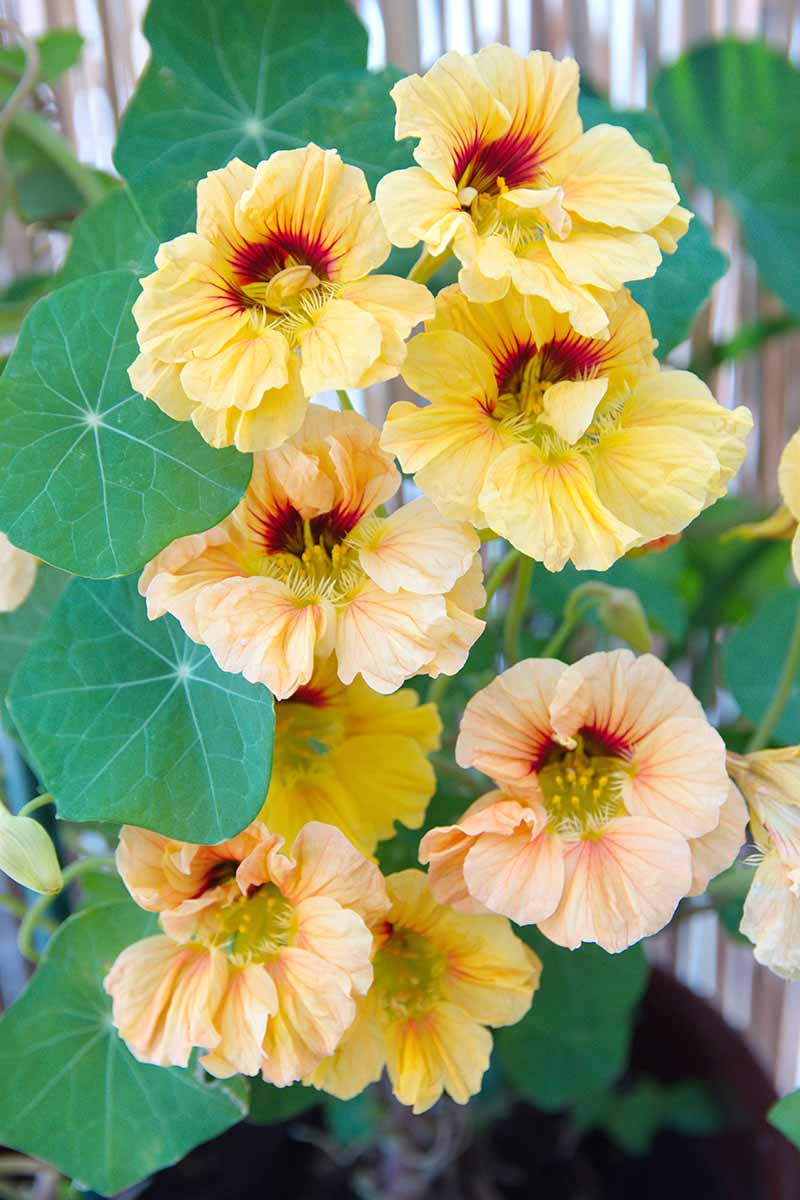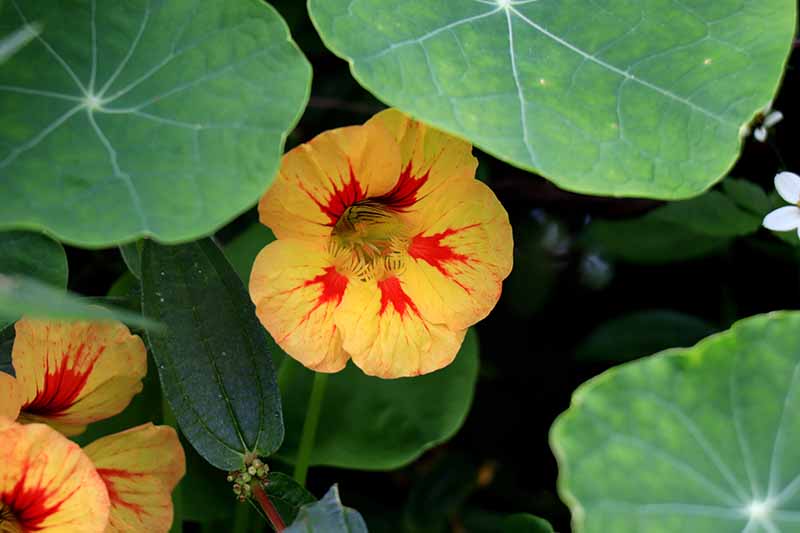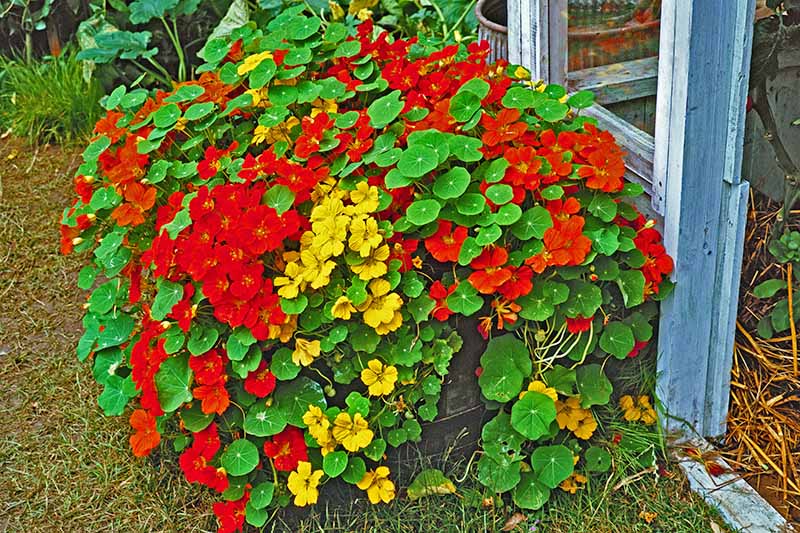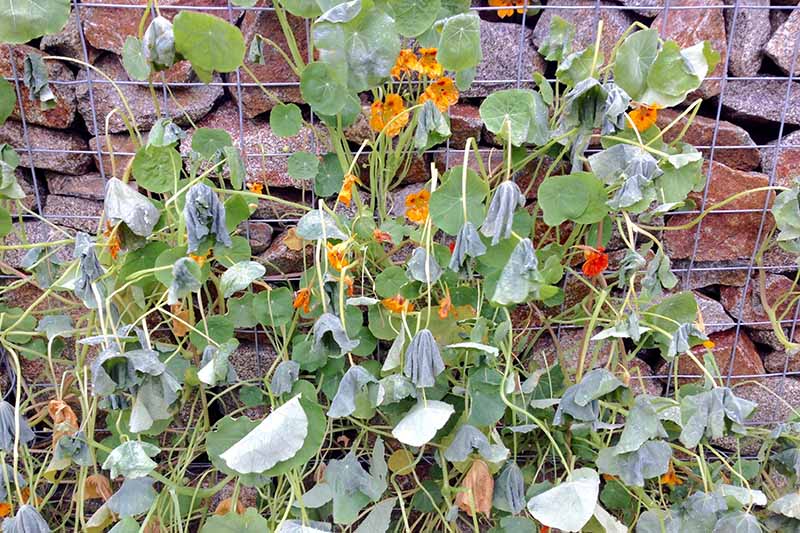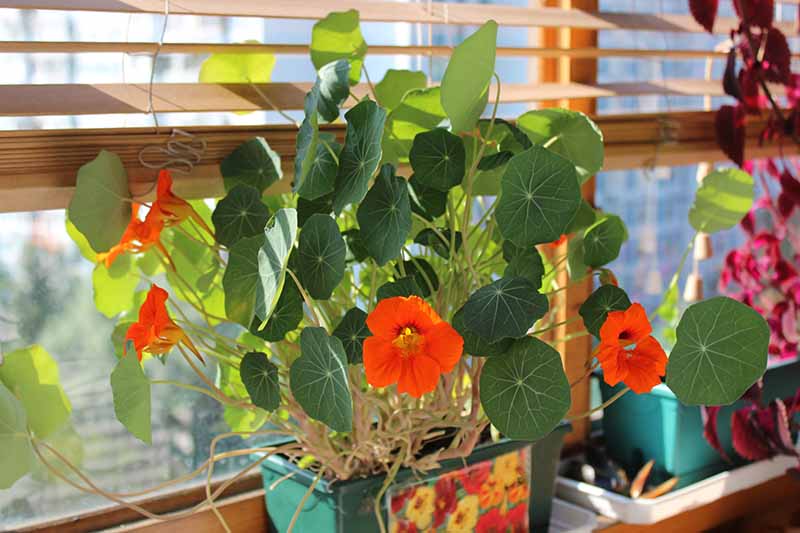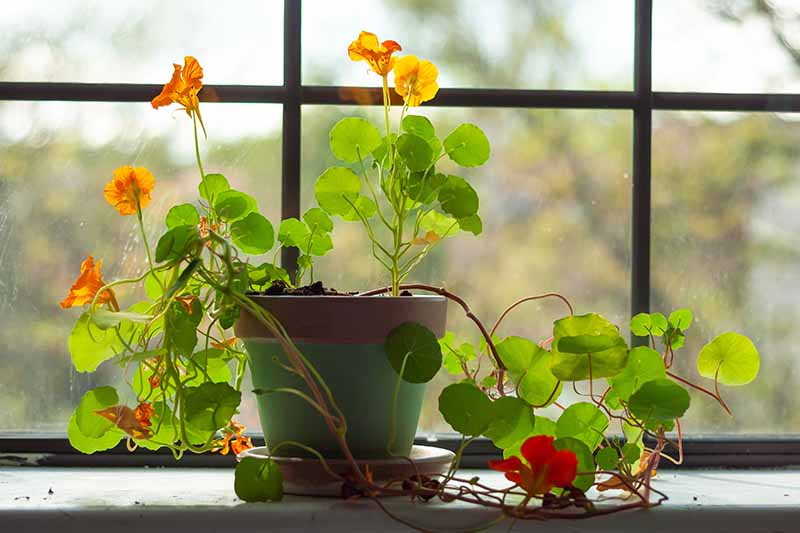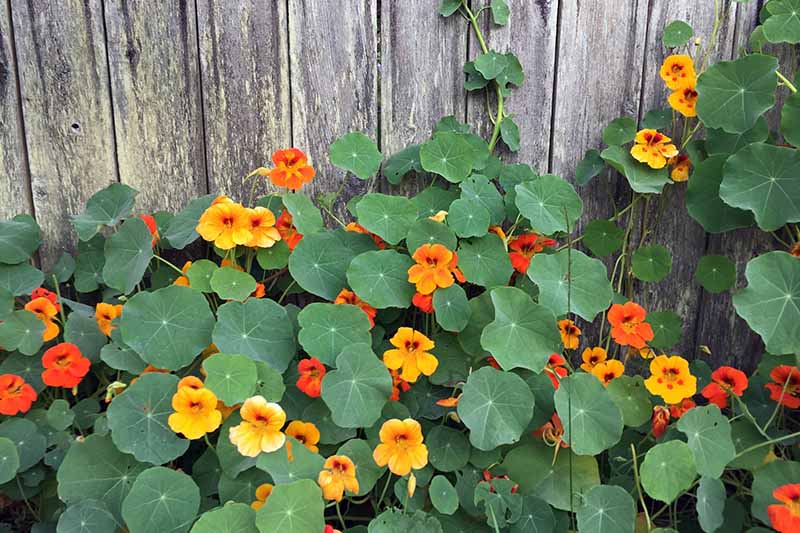Easy to grow, they require minimal care during the summer, but as an annual, these colorful plants are not suited to the cold temperatures of winter. We link to vendors to help you find relevant products. If you buy from one of our links, we may earn a commission.
Plant Hardiness Zones
To determine if your nasturtiums can survive the winter out in the garden, take a look at your USDA Plant Hardiness Zone.
They are usually fine to be left in the garden during the cooler weather in Zones 9-11. However, if you live in Zone 8 or below, it’s likely your plants will die if you leave them outside during the winter. Fortunately, nasturtium reseeds readily. If allowed to go to seed, with any luck, even if you haven’t collected seeds for replanting, some will sprout from the same area in the spring if they dropped to the ground during the previous fall. Fortunately, there are other ways to keep your nasturtium plants going strong through the winter as well.
A Refresher on Annuals
Remember that nasturtium is an annual, which means it completes its life cycle in one year. Therefore, if you planted your flowers in the spring, they will likely produce seeds in late summer or early fall, and die off with the first frost.
Don’t worry if this happens. It’s easy to collect the seed pods from the ground and start them again in the spring. However, if your plants have not yet set seed, they can continue growing throughout the winter – with a little care and attention. It’s worth noting there are some species in the Tropaeolum genus that are herbaceous perennials, such as T. tuberosum, a climbing variety which produces tubers. But for the purposes of this article, we’re concentrating on the annuals most commonly grown by US gardeners.
Protecting Plants from the Elements
If you live in Zone 9 or 10, frost may occasionally strike. If you see the weather forecast predicting temperatures below 35°F, get ready to protect your plants.
Floating row covers can provide shelter from frost and increase the air temperature around the plants. To use these covers, drape the material over your plants, making sure there are no gaps between the ground and the material. Secure the cover at the sides with dirt, bricks, or other weights. Gather and secure the fabric at each end. Although row covers only need to be put on when temperatures are predicted to dip below 35°F, you can leave them on when temperatures are in the high 30s and 40s. Your plants will benefit from the increased warmth and protection from the chilly conditions.
If you’re growing your plants in containers, then either bring them indoors or wrap them with a floating row cover and move to a sheltered spot. If you don’t have access to row covers, you can use a cardboard box to protect your plants from frost. Find a box that covers the whole plant and place it over the top. If your box still has the top flaps attached, place these flush with the ground and weigh them down with rocks, bricks, or dirt. This is a temporary solution, as the cardboard will quickly become damp and soggy in wet weather – you’ll need to remove it immediately if this happens, so this isn’t an ideal type of covering to use if you plan to go on a long winter vacation when inclement weather is predicted. Remove the box or cover after all danger of frost has passed.
Potting-Up to Bring Indoors
If you live in Zone 8 or below and your plants are growing in the ground in your garden, they will not survive the winter outside. You’ll need to pot them up and bring them indoors.
Since this tender flower can’t handle freezing temperatures, you’ll need to begin preparing before the first frost hits. If you have a trailing type of nasturtium, or a lush bush type, it’s best to give it a light pruning. Using pruning shears, cut the stems and leaves back until they are 10-12 inches long. This makes the plant easier to handle and also provides you with an edible treat. Try adding the trimmed leaves and flowers to a salad for a peppery punch of flavor.
After pruning, you’re ready to dig up your plants and put them into containers or pots. Using a shovel, dig down at least five inches away from the main stem. Continue moving around the plant until you have a circle that is a least ten inches in diameter and ten inches deep, depending on the size of your plant.
Carefully lift the plant and the root ball out of the ground, shake off some of the excess soil, and place it in a container that is at least ten inches in diameter. Fill the rest of the container with soil. After potting up your plant, place it in a sheltered location to allow it to acclimate to its new home. A garage or covered patio is a good choice. After a few days, you can move it inside.
Place the pot in a sunny location with a temperature of 55-70°F. Water your plant enough to keep it moist but not waterlogged. You can harvest the leaves and flowers throughout the winter, provided you leave at least three leaves intact – otherwise the plant will die. However, it’s important to note that the plant will grow much slower than it does in the summer.
Once the danger of frost has passed, you can move your pot outside during the day to allow it to acclimate to the outdoor environment. Bring it in at night to avoid temperature shock. After a week or so, you can either replant it in your garden or keep it growing in the container. Since nasturtium is an annual, it may soon produce seeds and die back. Luckily, spring is the perfect time to plant new seeds out in the garden for fresh, vibrant blooms.
Let us know in the comments if you’ve grown nasturtiums through the winter successfully, and share your tips. And check out the following articles on managing flowers in the colder weather:
Guide to Clematis Winter Care: Protect Your Vines from Freezing and Frost Winter Blooms for Your Garden 11 of the Best Cold Temperature Ornamental Plants for the Fall Garden
© Ask the Experts, LLC. ALL RIGHTS RESERVED. See our TOS for more details. Originally published on December 27, 2019. [lastupdated]. Uncredited photos: Shutterstock. With additional writing and editing by Clare Groom.
